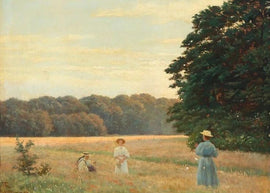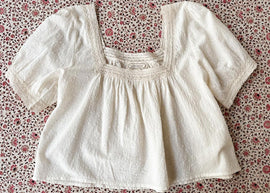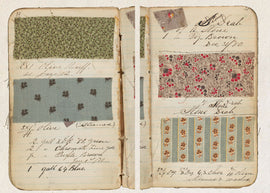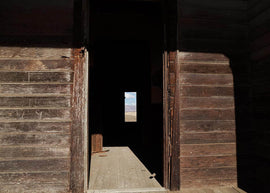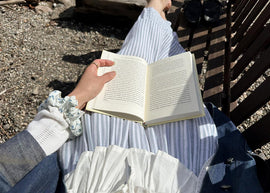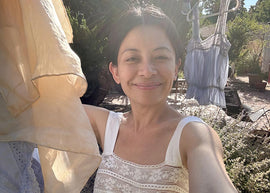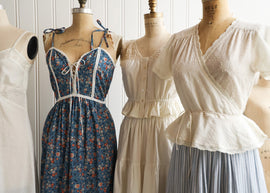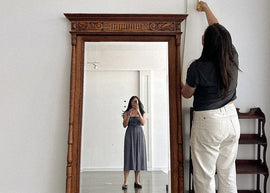Using Deadstock Fabrics
My intention for Atèlette wasn't to create a sustainable clothing brand. First and foremost, I wanted to create beautiful & timeless garments that brought me joy to create that women could wear year after year, turn to again and again. I wanted to create garments that would be cherished, loved, and became integral pieces in a woman's wardrobe that reflected back to her the life she lived and the life she aspired to have. Like cloth talismans that reminded her of who she was and where she was headed.
That was and still is my intention, my raison d'etre, my pulse for Atèlette. Through my self-taught journey of how this part of the fashion industry works, I came to find that choosing the more sustainable options actually does not cost that much more and, in some cases, it's actually more cost effective, at least for my small brand.
I am talking about choosing deadstock fabrics and materials to create Atèlette. The term deadstock has been milling around for a couple of years. I first came across the term as a vintage clothing seller and once in a blue moon you come across deadstock vintage. This usually means it still has the shop tags attached and it was stock that never sold. Deadstock material is pretty similar. It can mean a couple of different things though in the fashion production world. Deadstock can mean remnants from another brand or clothing line's production run (they ordered too much, there's material leftover). It can also mean material that was produced that another brand/line cancelled or changed their mind on. This happens a lot, especially with really big brands like Zara. Sometimes it happens because brands will create fabrics for their collections and the pantone color is off or the print scale is too big or too large. So, the bolts of fabrics are cancelled. Deadstock doesn't just apply to fabric. It also applies to trims (laces, ribbons, buttons, etc).
What Does Deadstock Fabric Mean?
➳ Leftover Material: Deadstock fabric often comes from remnants of another brand or clothing line’s production run, where excess material was ordered and not used.
➳ Cancelled Orders: It can also refer to fabric produced for a brand but cancelled due to changes in design, color, or scale.
➳ Production Errors: Sometimes, materials are discarded because the color or print didn’t match the brand’s specifications.
➳ Unwanted Stock: Includes unused fabrics or trims (like lace, ribbons, or buttons) that were intended for collections but never utilized.
➳ Repurposed Resources: By using deadstock, brands give new life to materials that might otherwise go to waste, making it a sustainable and resourceful option.
By using deadstock, we give new life to materials that might otherwise go to waste, making it a sustainable and resourceful option for Atèlette.
Maybe you're wondering how I came across all this deadstock material? I personally didn't. I’m grateful to have access to through my manufacturing partner, who shares this as one of their core values. Again, remember, my initial goal wasn't to be a sustainable brand. I had met with several textile companies and had loads of catalogs for materials that could be sourced. The yardage minimum for these fabrics were high so in my mind I was planning on creating several pieces out of one fabric. These fabrics were also very expensive, so at the time, based on my research and calculations, I knew my dresses would have to retail starting in the mid $200s.
One fabric I loved the cost was about $11.50 a yard, the minimum yardage I needed to purchase to qualify to order this fabric was 100 yards. The dress I wanted to create required about 4.5 yards. So material alone is $51.75. This does not include shipping cost from Japan (where fabric mill was located) to India (where my manufacturing is) for a bolt of 100 yards of fabric. This also does not include any of the development costs, the labor to cut and sew, any trims (lace, zippers, buttons, hooks). That is just the cost alone for actual garment. Then we need to add cost of shipping, import/duty taxes, and of course all my overhead for owning a business (office, employees, and the dozens of other costs tied into running/operating a business in America)
Typical Costs in Making A Garment:
➳ Fabric Costs: $11.50 per yard, with a minimum purchase of 100 yards for a total of $1,150; each dress uses 4.5 yards ($51.75 per dress).
➳ Shipping Fabric: Cost to ship 100 yards from Japan to India (not included in the fabric cost).
➳ Development Costs: Expenses for designing and creating the garment prototype.
➳ Labor: Costs for cutting, sewing, and assembling the garment.
➳ Trims and Notions: Additional materials like lace, zippers, buttons, and hooks.
➳ Shipping Finished Garments: Transportation costs to deliver the final product to its destination.
➳ Import/Duty Taxes: Fees for importing materials or finished garments.
➳ Business Overhead: Operational expenses, including office costs, employee salaries, and other business-related costs in the U.S.
So, you see, that $51.75 just for the fabric was the first "pain point". Until I realized that I could trim down that cost by more than half (in some cases) by choosing deadstock materials! There are a couple downsides to choosing deadstock material for Atelette. For instance, with the Oppedette and Soleil Dress, I wanted them made in a blue gingham. So, my team in India visited fabric shops to see what was already available and photos were sent to me then I would choose (based on photos) which ones to get swatches of. There was another gingham I actually loved more than the one the Oppedette and Soleil were made in, but unfortunately there was only 40 yards of it. Enough to make maybe 8 dresses total.
So, obviously that wasn't an option because I would hardly make the return back on the development costs of both of these dresses. So that is one of the downsides of using deadstock, the options are pretty limited and sourcing fabric can take awhile. Another downside, though I don't think it's that negative, is sometimes the materials have small spots/stains for whatever reasons. This could have happened during production of the fabric and so then the brand wanted it remade. It could have happened during storage, or the fabric could have slightly discolored because it's been deadstock for awhile (like some whites will yellow a bit). You will notice that I often will have pieces made in the same deadstock fabric. In the case of the Bea, Garcelle, and the Victoire, all of these tops use the same deadstock cotton dobby and deadstock cotton laces.
Last Spring/Summer I decided to introduce the vote-to-make model, I can get a pretty good gauge of how many units to make of each piece and I try to use up as much of the deadstock fabric as possible. Whatever we don't use up and any fabric remnants (that are large enough to be reused) from the cutting room floor usually gets set aside to make our zero waste accessories.
I hope you gleaned some new insight into the Making of Atelette and I hope knowing this information means you will treasure your garments more and take good care of them. A lot of thought and many hands are involved in creating each piece, which is perhaps something I will share more about in a future post.
xo, Ro



